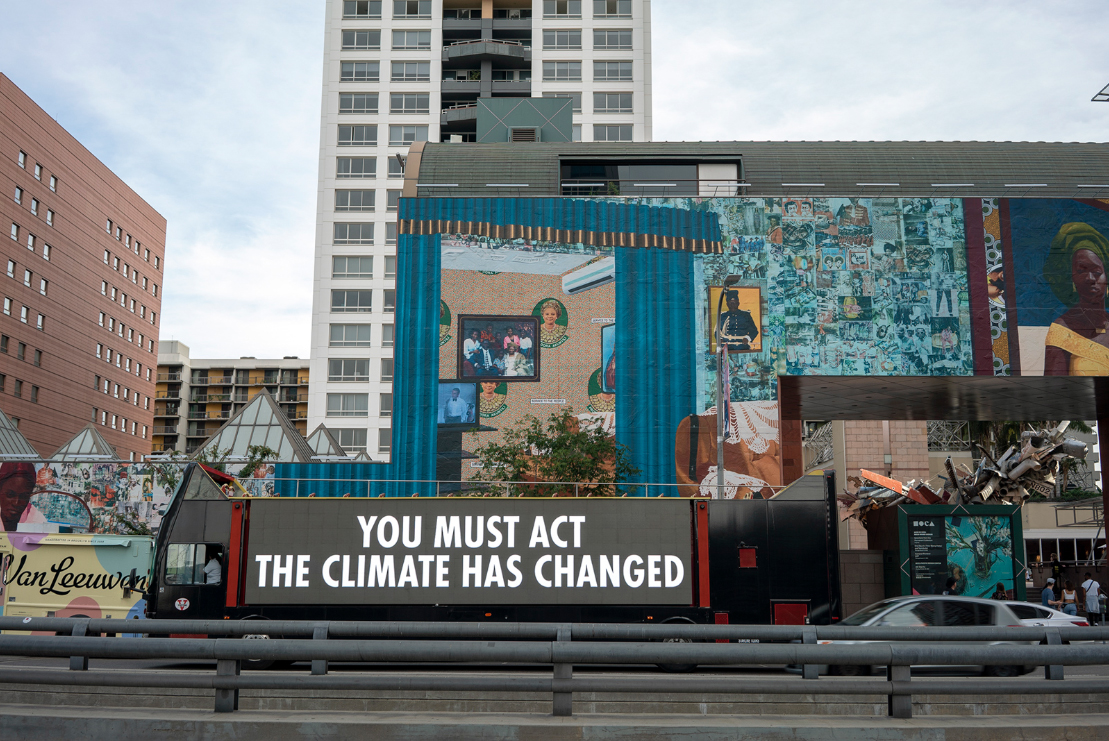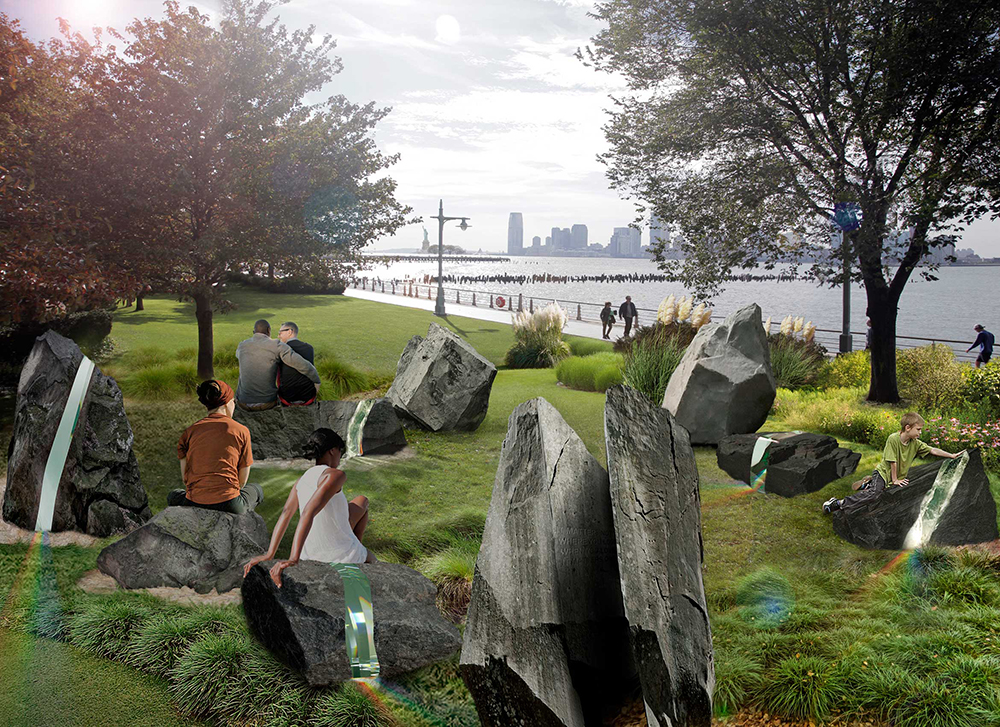With the prodding of City Council Speaker Christine Quinn, the Rudin Management Company agreed to hand over the the last smidgen of property at Triangle Park for use in an AIDS memorial. The park sits across the street from St. Vincent’s Hospital where so many AIDS patients were cared for and died. After months, indeed years, of wrangling, the gateway park to the West Village will move forward largely as originally planned, with M. Paul Friedberg incorporating components of the memorial by AIDS Memorial Competition winner studio a+i into the park design. The 1,600 square foot memorial will sit at the park’s westernmost edge, replacing a triangular building that stored oxygen tanks for the now defunct hospital.
Gone are the large scale plans for the memorial which would have taken over the entire park and enclosed the site with a mirrored interior / slate exterior. Gone also are plans for an underground museum. By challenging competition entrants to utilize the entire Triangle site, Christopher Tepper and Paul Kelterborn from the AIDS Memorial Coalition (formerly the Queer History Alliance) made a huge media splash and ruffled more than a few Village feathers. After watching St. Vincent’s fail and luxury housing move in, many in the community were looking forward to the one aspect of the Rudin plan they liked–open space. Some thought the Coalition’s overly aggressive approach was usurping the ULURP process.
The activists’ stance recalled old-school ACT-UP tactics. For the competition, they pulled together a big name jury (Whoopi and Arad) and big arch media (Arhchitizer and Architectural Record). With the agreement in place, a more conciliatory Coalition will team up with M. Paul Friedberg and work with the community at several charrettes hosted by Community Board 1 beginning this summer.
While the Coalition may not have achieved all that they’d hoped for–it did accomplish much more than a memorial plaque. “I think we had to make our presence felt really strongly,” said Tepper. “There’s this history there and there’s barely a statue. We had to be forceful and get people to think about it.”









